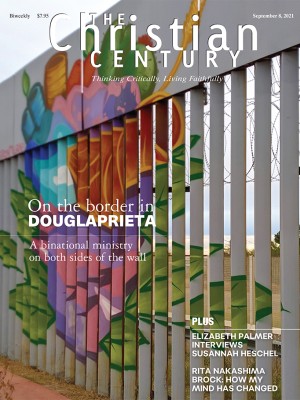Willimon and Hauerwas’s out-of-season words on pastoral care
Pastors coping with the pandemic need our encouragement, not our carping.

Read Willimon and Hauerwas’s conversation and Maria Russell Kenney’s response.
I read with interest the recent article by Stanley Hauerwas and Will Willimon on the excesses of pastoral care. Any publication by these two wise men calls out for attention, and this one is no exception.
Much here I can happily affirm. We still live in a narcissistic culture, as Christopher Lasch termed it back in the 1970s, when Hauerwas, Willimon, and I were still youngsters. That culture seeps into the lives of church members and their pastors (and a fair number of seminary professors as well). Too often pastors say only what they think people want to hear and affirm judgments and practices that ought to be challenged. (Again, the same might be said about many seminary professors, including the one who appears in the mirror.)
Read our latest issue or browse back issues.
To these general concerns, I assent. But then I find myself checking the cover of this issue of the Century for the date of publication, wondering whether its distribution was considerably delayed. Almost nothing in the article betrays any awareness of the events of the last 18 months. Yes, Will recalls admiringly Stan’s pithy observation at the start of the pandemic about pastors and people “who think dying is optional,” and Stan is happy with Will’s recollection. But nothing else here reflects the work actual churches have been doing.
Where is the acknowledgment that congregations have spent the last 18 months in crisis, that the end is nowhere in sight? What does it mean to conduct funerals and weddings with skeletal attendance or even over Zoom? Have Willimon and Hauerwas attempted to pass the peace while sitting alone in front of a screen? Have they preached week after week into a nearly invisible camera lens, with no one present who might nod or shake the head or call out “Amen”? Nothing in the article reflects the constant adjusting and readjusting of plans made necessary by the pandemic. Nor does anything take into account the daunting challenges that lie ahead, when the pandemic is finally under something like “control.”
Paul knew a thing or two about being “wounded by Christ,” and every letter of his displays those wounds. Every letter bears witness to God’s intervention in Jesus Christ and to the power of that intervention to redeem human lives, to bring about “new creation.”
Yet the letters are not all the same—not by a long shot. First Thessalonians is a virtual love letter, in which God’s gracious redemptive act in Jesus Christ overflows into Paul’s passion for a group of folks he misses and encourages. His letter to the Galatians differs sharply: here he confronts in unsparing language a group he regards as having been severely misled by disruptive teachers. Romans takes another approach altogether, since Paul is writing to people he has never met and must proceed with great caution. Here he teaches, moving ever so carefully to pull his unseen audience along with him.
These letters differ because the places and the seasons differ. If I understand Willimon and Hauerwas correctly, all of Paul’s letters should look alike—perhaps like Galatians. But 1 Thessalonians also has its place, to say nothing of Philemon and Philippians and the letters to the Corinthians. The act of God in the life, death, and resurrection of Jesus Christ does not change, to be sure, but differing times and seasons require differing responses.
To be honest, I tried not to write this response. I am a rather poor controversialist. I have been driven to it because, as someone who admires both Willimon and Hauerwas, and as a retired seminary professor of roughly the same vintage, I find myself a little embarrassed on their behalf. I have started more than one story with “When I was in seminary” or “When I began teaching,” but I have managed not to put those stories into print. Beginning an article with “When I graduated” is almost guaranteed to aggravate some readers, especially if that “when” is over a half century ago. More to the point, it does not recognize the immense changes in ecclesial life that separate “when I graduated” from this season of 2021.
To make things worse, the joint essay is presented as a conversation. This suggests multiple voices and invites varying perspectives. But here the voices merge into one, with no hint of daylight in between. Demographics have a lot to do with the monotone effect, of course. Perhaps the conversation would have gone differently had they listened for even an afternoon to pastors who are actively engaged in congregational ministry, assuming they could find pastors with time to spare.
In my judgment, in this article Willimon and Hauerwas take on the role of the grumps who sat in their safe seats during the Olympics. They whine about Simone Biles’s withdrawal from the competition, lamenting her lack of mental toughness. Meanwhile, pastors in local churches are trying to do backflips on four-inch-wide beams and then stick the landing. Those pastors need our gratitude, our respect, our encouragement, and especially our prayers—not our carping.





